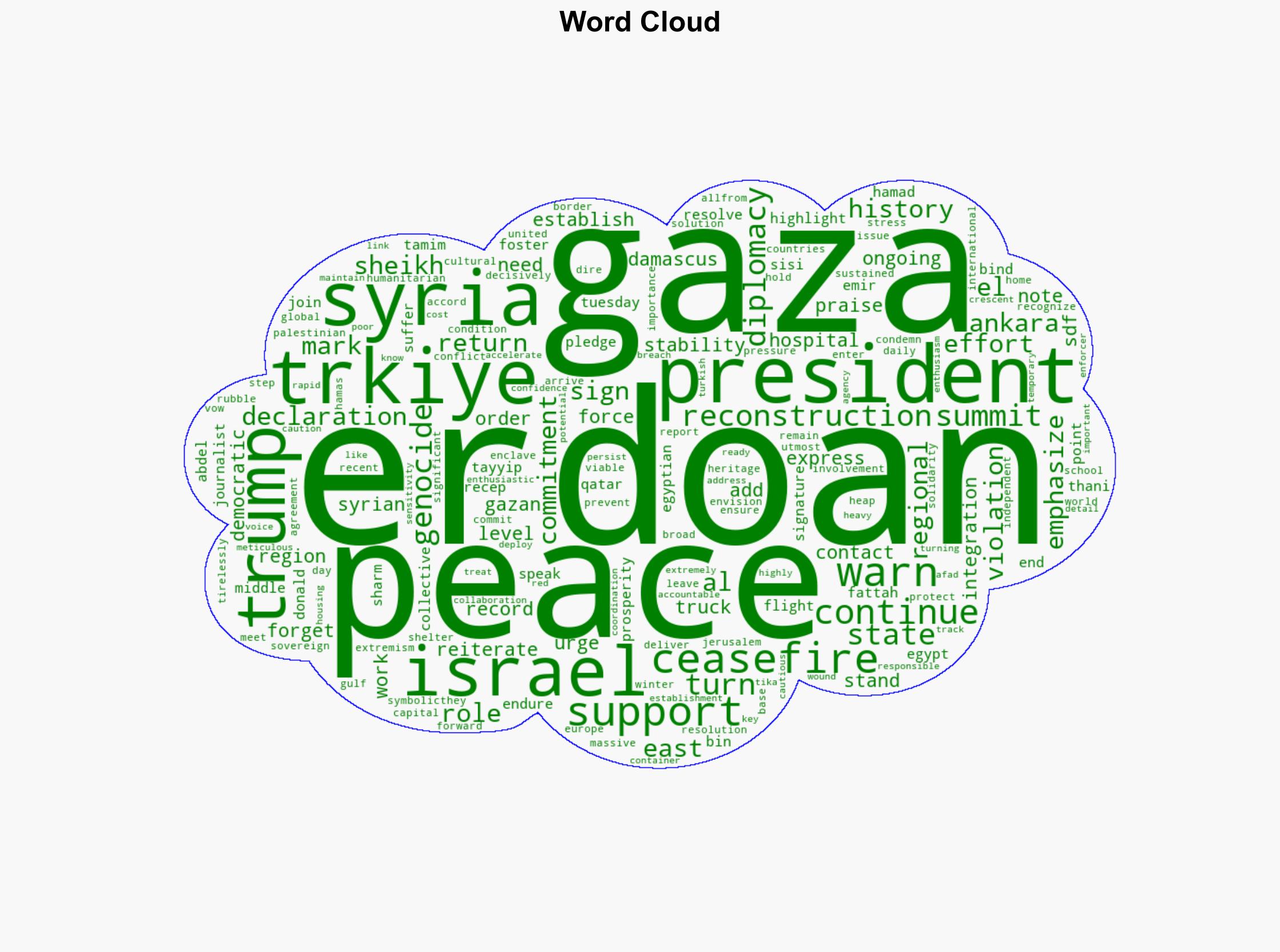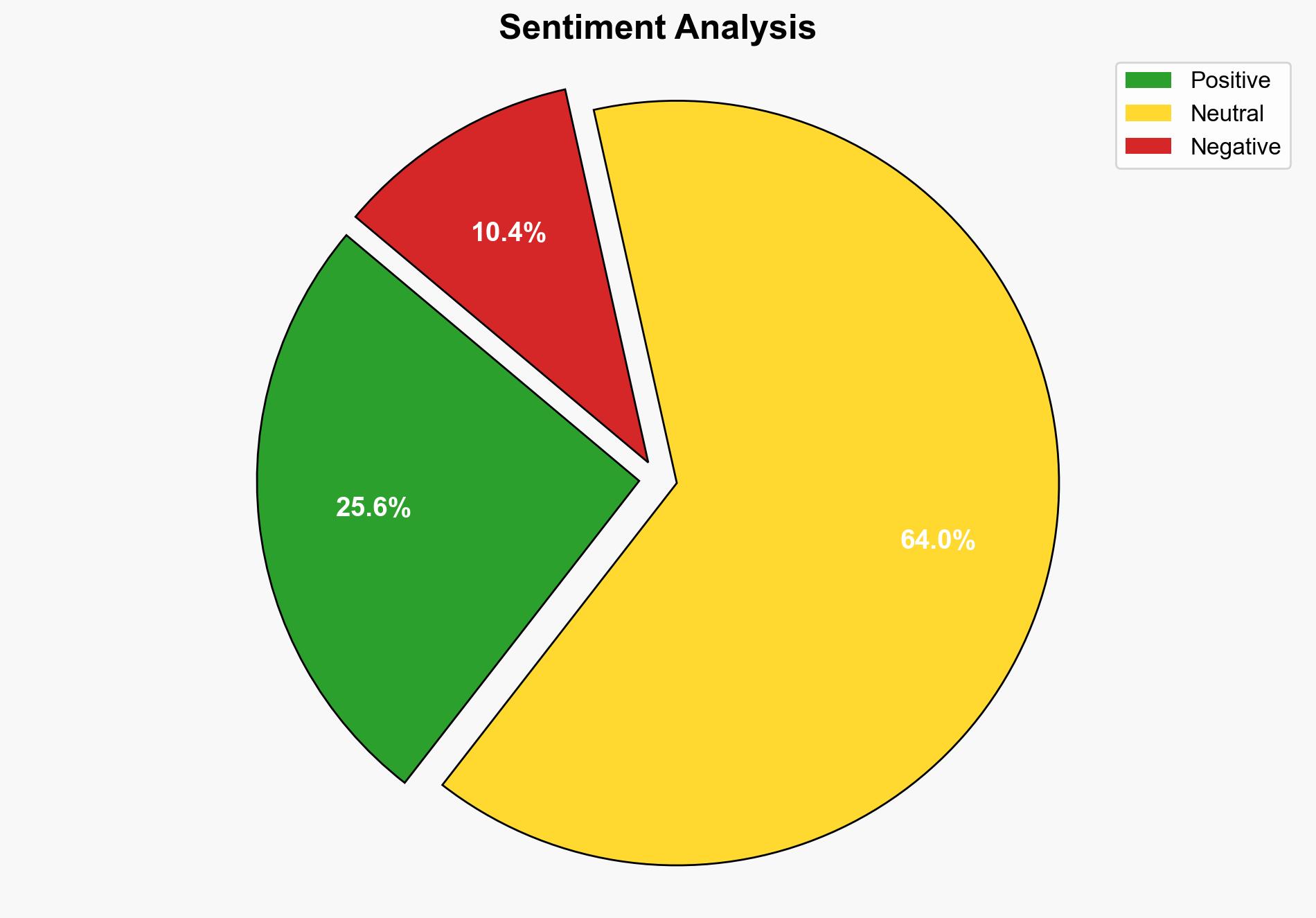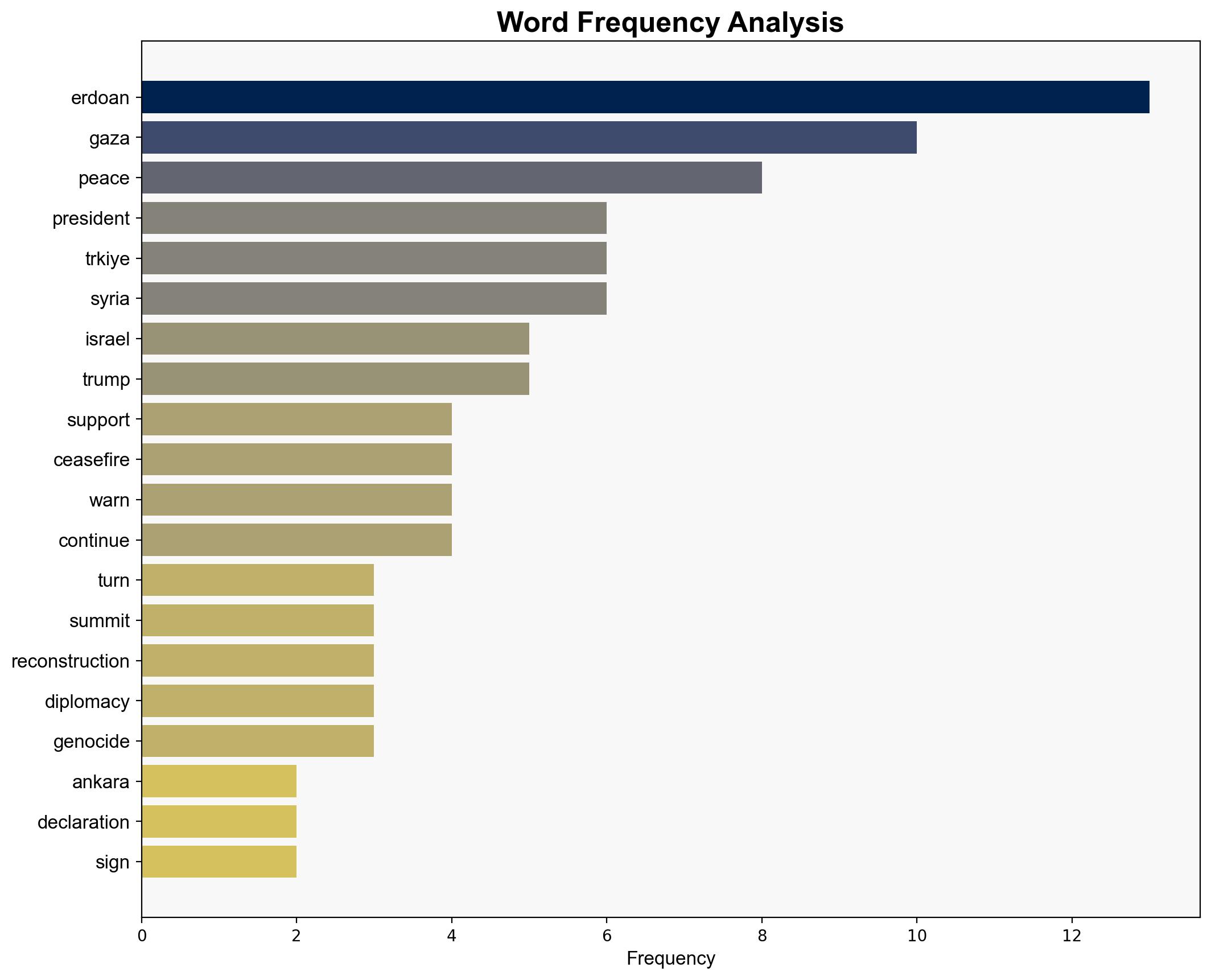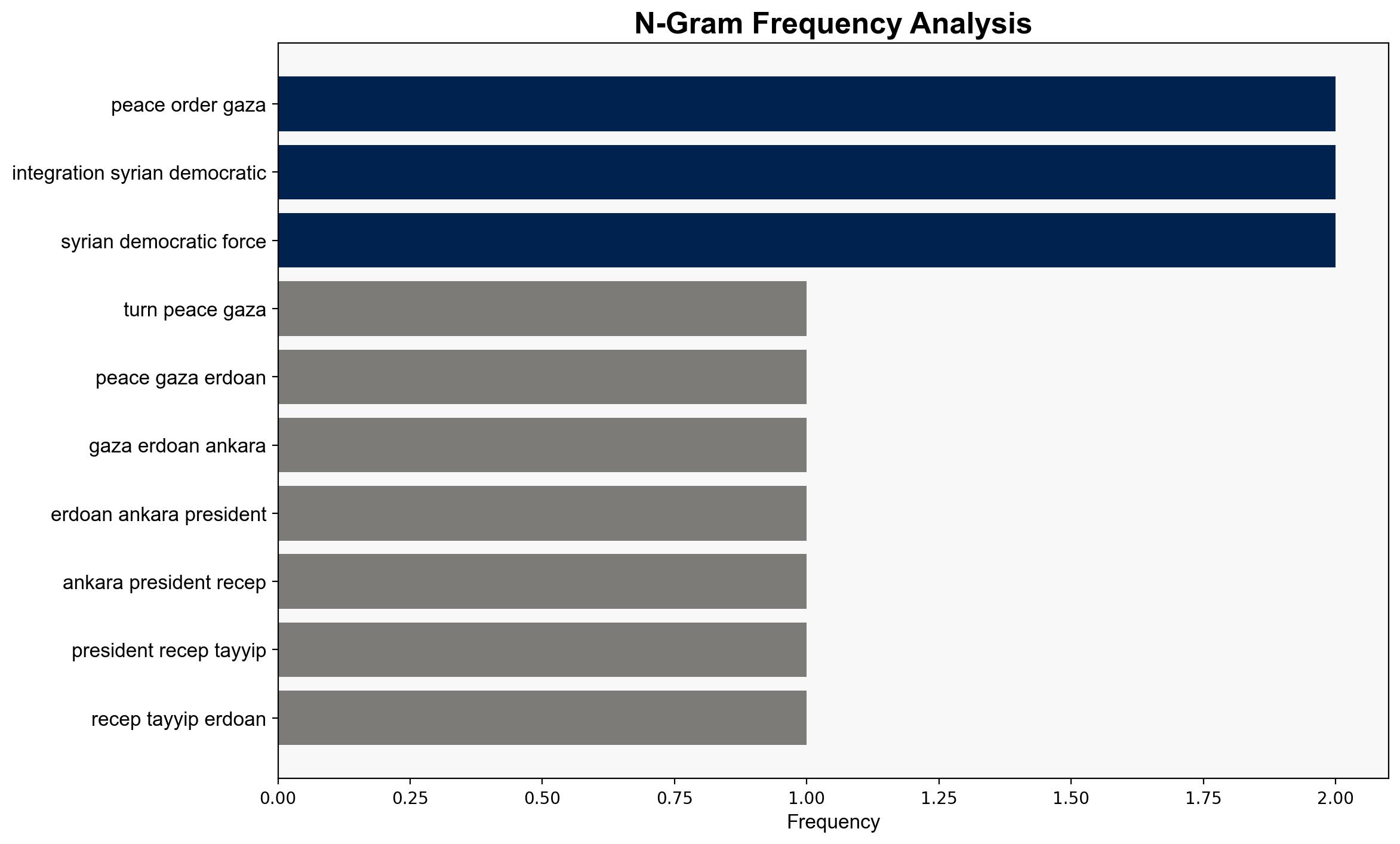Gaza ceasefire signatures seal historic peace commitment Erdoan – Hurriyet Daily News
Published on: 2025-10-14
Intelligence Report: Gaza ceasefire signatures seal historic peace commitment Erdoan – Hurriyet Daily News
1. BLUF (Bottom Line Up Front)
The most supported hypothesis is that the ceasefire agreement represents a genuine commitment by involved parties to stabilize the region and initiate reconstruction efforts in Gaza. Confidence in this hypothesis is moderate due to historical precedents of ceasefire violations and geopolitical tensions. Recommended action includes monitoring compliance, supporting reconstruction efforts, and engaging in diplomatic dialogues to ensure sustained peace.
2. Competing Hypotheses
1. **Genuine Commitment to Peace**: The ceasefire agreement marks a sincere effort by the involved parties to stabilize Gaza and foster regional peace. This is supported by the symbolic signing at the Sharm El Sheikh summit and the involvement of multiple international leaders.
2. **Strategic Posturing**: The ceasefire is primarily a strategic move by the involved parties to gain international favor and buy time for political maneuvering, rather than a genuine commitment to peace. This hypothesis considers historical patterns of ceasefire violations and ongoing regional tensions.
3. Key Assumptions and Red Flags
– **Assumptions**: The first hypothesis assumes that all parties are acting in good faith and are willing to compromise for long-term peace. The second hypothesis assumes that historical patterns of conflict will continue to influence current actions.
– **Red Flags**: Israel’s track record of ceasefire violations and the potential for internal political pressures in Turkey and other involved countries to influence adherence to the agreement.
– **Missing Data**: Specific details on the mechanisms for monitoring and enforcing the ceasefire are not provided, which could impact the agreement’s sustainability.
4. Implications and Strategic Risks
– **Geopolitical Risks**: Failure of the ceasefire could lead to renewed violence, destabilizing the region further and impacting global security.
– **Economic Risks**: Continued instability may deter international investment and aid in Gaza, exacerbating humanitarian conditions.
– **Psychological Risks**: Prolonged conflict could lead to increased radicalization and recruitment by extremist groups.
5. Recommendations and Outlook
- **Mitigate Risks**: Establish a robust international monitoring mechanism to ensure compliance with the ceasefire.
- **Exploit Opportunities**: Facilitate international investment in Gaza’s reconstruction to stabilize the region economically.
- **Scenario Projections**:
– **Best Case**: Full compliance with the ceasefire leads to long-term peace and regional stability.
– **Worst Case**: Breakdown of the ceasefire results in escalated conflict and humanitarian crisis.
– **Most Likely**: Periodic violations occur, but international pressure maintains a fragile peace.
6. Key Individuals and Entities
– Recep Tayyip Erdoğan
– Donald Trump
– Abdel Fattah el-Sisi
– Sheikh Tamim bin Hamad Al Thani
– Hamas
– Israel
7. Thematic Tags
national security threats, regional focus, conflict resolution, international diplomacy, humanitarian aid




